Fine Days in Carolina
“Nothing could be finer than to be in Carolina in the morning,” goes the song made famous by Al Jolson, Bing Crosby, Judy Garland and many others (words by Gus Kahn and music by Walter Donaldson, 1922). Steve and I had nine fine days in both North and South Carolina this past month. On May 2, while Steve drove to Beaufort SC for golf, I flew to Charlotte NC to join my friends Allene Cooley and Kate Richards. Right away they introduced me to their friend Erwin Mercer, someone they knew I would bond with over art. So began five days of looking at provocative art, learning more about American history, eating wonderful Carolina food, and enjoying warm friendships.
Our first stop in the city was the McColl Center for Art and Innovation, where two works by Dustin Farnsworth captured my attention. Both were memorials to 43 Black children killed by law enforcement in 2014. The first is like a boat on the River Styx, carrying charred remains to the underworld. “XLIII” features an over-sized badge of authority resting on a school desk propped up by a yellow pencil. The more I look at these pictures, the more I share Farnsworth’s sensitivity to Black lives mattering and respect his thoughtful response.
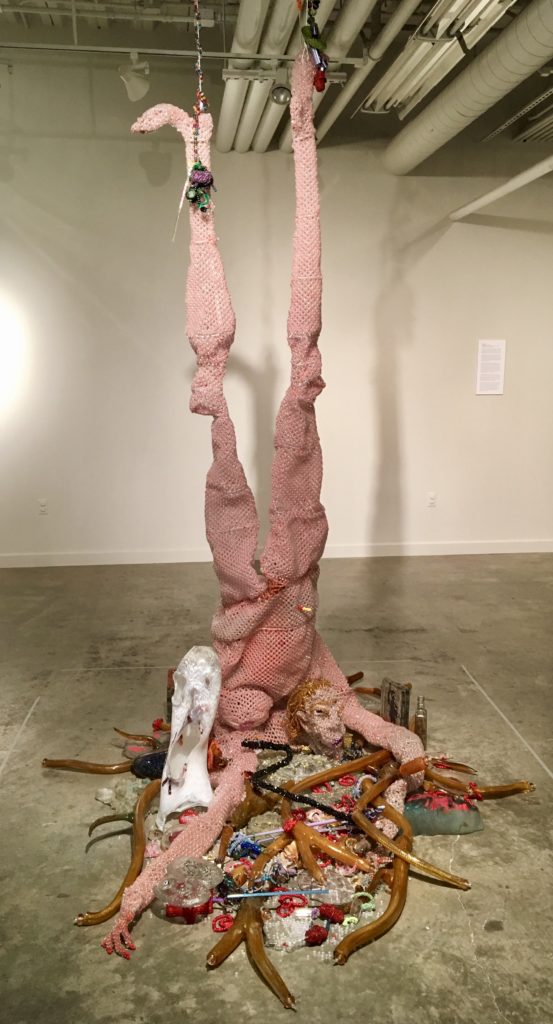 Another arresting work was Joyce J. Scott‘s “Lynched Tree,” 2011-12. According to the artist, in African society, woman is the “tree of life,” under which justice is dispensed. But this woman is upside down and disemboweled, depicting unjust treatment of women around the world.
Another arresting work was Joyce J. Scott‘s “Lynched Tree,” 2011-12. According to the artist, in African society, woman is the “tree of life,” under which justice is dispensed. But this woman is upside down and disemboweled, depicting unjust treatment of women around the world.
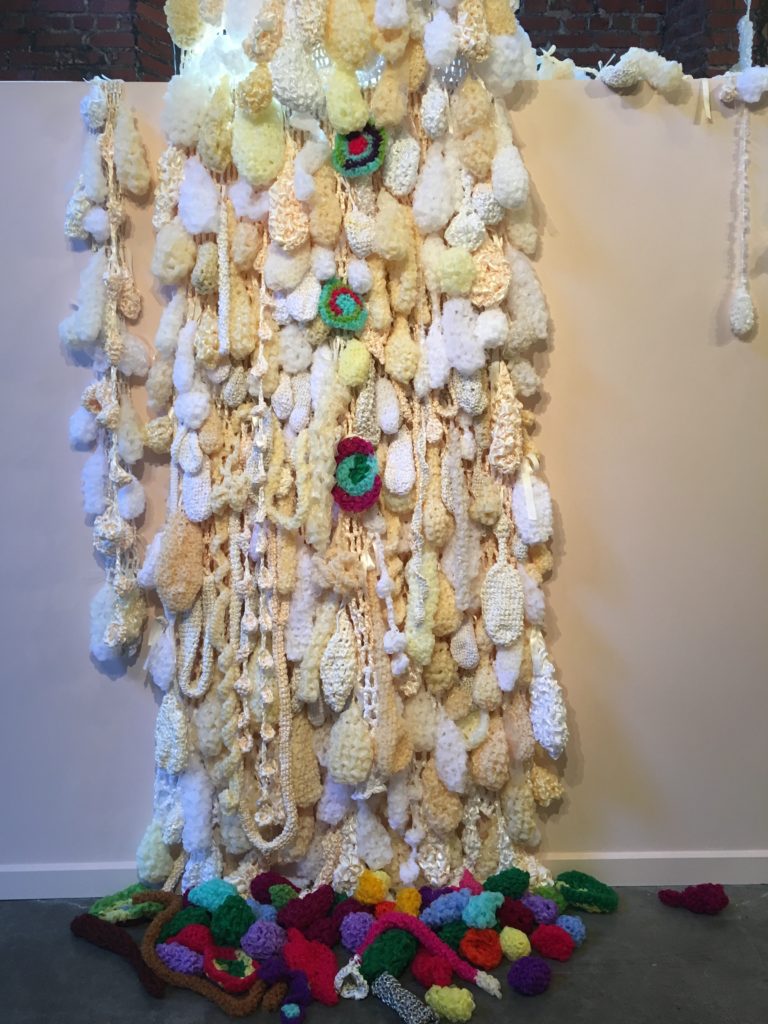
Softer and more affirming was Mary Tuma‘s “Cascade,” of crocheted ribbons, bells, yarn, and lace that spanned all 3 stories of the building, a meditation on time, memory and lives lived. More photos from the McColl Center are in this album.
Allene, Kate, Mercer and I had a lovely dinner at Quail Hollow Country Club, where Allene and Jim are members. Spring was there in full force, with rhododendrons blooming riotously and colorful birds vying to be heard. The next morning, Mercer took me to the Mint Museum. I learned that gold was discovered near Charlotte in 1799 and that a U.S. Mint operated there from 1837 to 1861. Now the old Mint is a museum on Randolph Street. We spent over an hour looking at “Three Generations of Wyeths from the Bank of America Collection. One of my favorites was “Crossed Swords” by Andrew Wyeth. More in my album here.
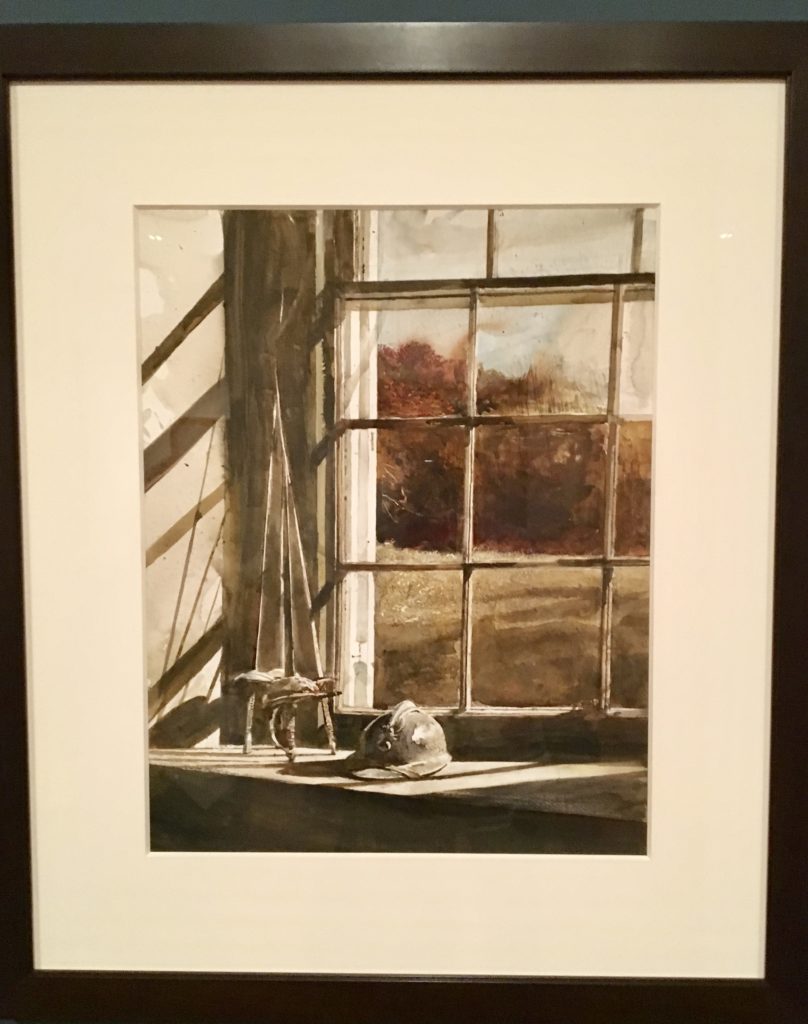
That afternoon we drove from Charlotte NC to Beaufort SC, to meet Steve and Jim and attend a party at the lovely home of Susan and Ron Morrow. We enjoyed reconnecting with friends made during Steve’s tenure as President of Secession Golf Club and watching the sun set over the Low Country.
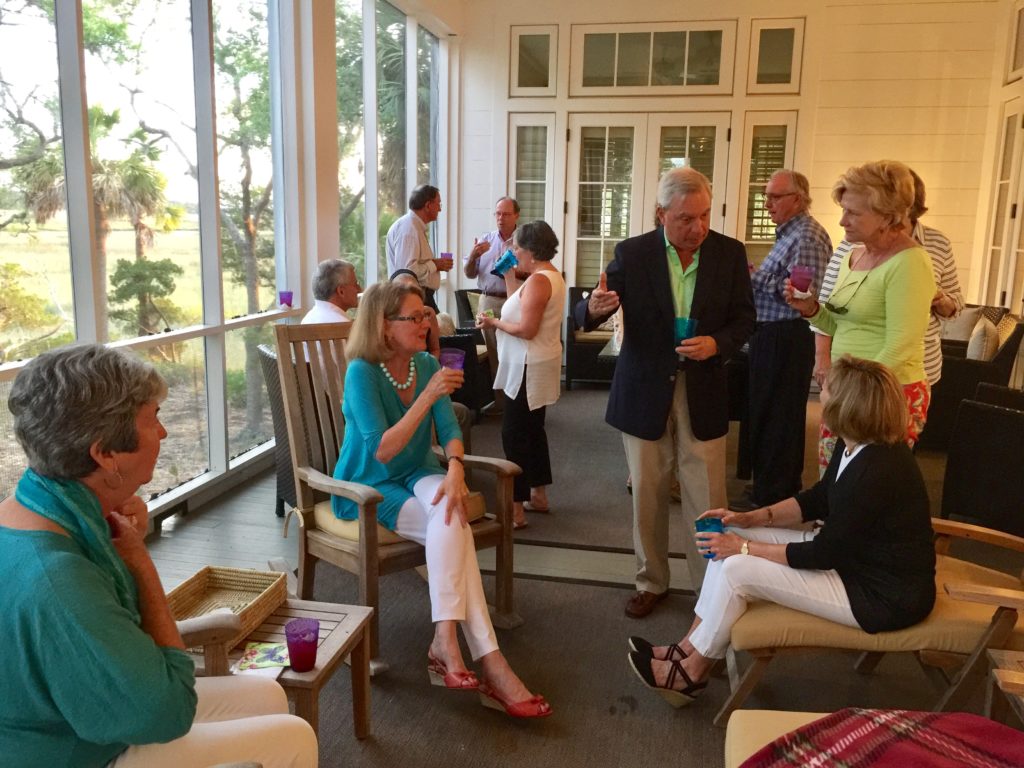
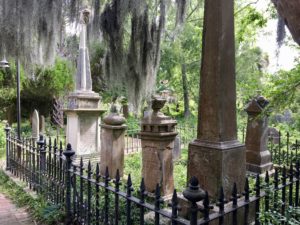
Early the next morning Allene, Kate and I drove two hours to Charleston for a special two-and-a-half-hour tour of the city from the viewpoint of the Grimké sisters. We had read Sue Monk Kidd’s book, The Invention of Wings, and were eager to see where the famous Charleston sisters, Sarah and Angelina Grimké, had lived and where they had encountered the cruelty that led them North to become abolitionists and suffragists. Impressed by the tour, I wrote this review on Trip Advisor:
As my friends and I walked the charming streets of Charleston, we stopped, always in the shade, and heard true stories of two remarkable sisters. In the early 1800s they had privileged lives with their own enslaved maids. But it bothered them that their mother carried a whip and that their father, a kindly judge, limited their access to his library. First, they began to teach slaves to read. Gradually, they came to abhor slavery and embraced the Quaker religion. Eventually, they each moved North and spoke out for abolition and women’s rights. Lee Ann Bain was a terrific guide to this history and through her beloved city
Window boxes full of spring flowers provided welcome relief to the stories of how horribly Blacks were treated in the first decades of the 19th century. Allene said that she had thought the gruesome punishments in the book were overdrawn, but after this tour, they seemed all too accurate to her. This album shows a prison, a slave market, and a graveyard, plus some wrought-iron gates that reminded me that the corona around the new African American Museum in Washington was inspired by ironwork done by slaves in Charleston and New Orleans. Later we drove past the Emanuel African Methodist Episcopal Church, from which Denmark Vesey, a freed man, had led a revolt in 1822, and in which Dylann Roof murdered nine people in 2015.
After yummy shrimp and grits at a great restaurant with a terrible name, S.N.O.B. (Slightly North of Broad), we toured replicas of Columbus’s ships, the Niña and the Pinta, in Charleston Harbor and heard volunteers recount their arduous journeys in the 1490s. The ships had historically accurate dimensions, but seemed really small for trans-Atlantic journeys.
We returned to Beaufort and the guys for dinner at Steve’s favorite restaurant, Breakwater. On Friday morning we drove an hour to Hilton Head for a lecture, “Global Income Inequality,” by Timothy Smeeding, an economist at the University of Wisconsin. He was speaking to a crowd of at least 500 people drawn by the World Affairs Council of Hilton Head Island to a large Presbyterian church. He suggested these policies to reduce rapidly growing income inequality in all nations:
- tax capital, including inheritances
- reduce corruption and tax loopholes that benefit business interests
- collect tax revenue to improve public infrastructure
- improve education
- more and better apprenticeships
- give labor a voice, say for $15/hour
- broader profit-sharing among all long-term employees
I agreed with the speaker on most issues; our host, Tom Paskins, not so much. We put aside our differences and lunched at the South Beach Club. I hadn’t been to Hilton Head in a dozen years; it’s become much fancier.
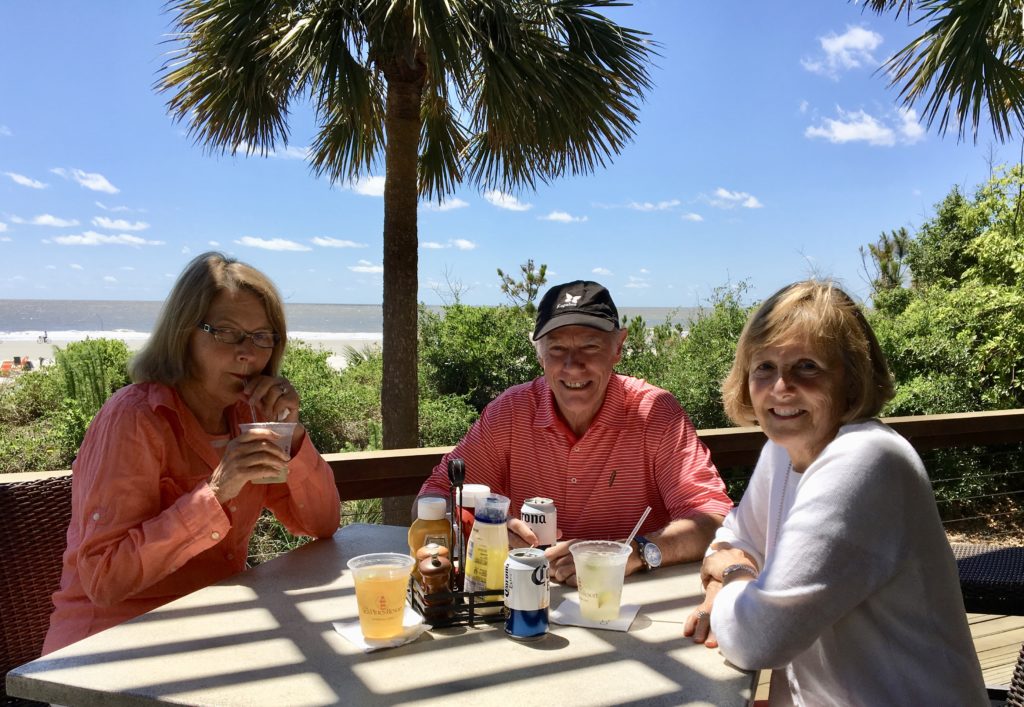
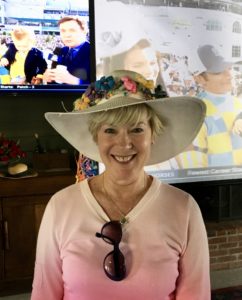
While the golfers had their own dinner, Susan invited us to try RED Wine Boutique in Bluffton. We liked it so much that I wrote another review on Trip Advisor. Kate returned to Charlotte Saturday morning; Allene and I shopped in Beaufort and enjoyed sitting on the porch at their cottage, “Cool Breezes,” watching the birds and the alligators. In the evening Steve and I joined the Morrows for a Kentucky Derby party at their club on Spring Island. Afterward, during dinner, I took the picture at the top of this post. We had a scrumptious Low Country breakfast with Allene and Jim on Sunday morning, then drove seven hours back to Boynton Beach. Could anything have been finer than two sunny days in Charlotte and three sunny days in the Low Country?
Well, from May 21 – 24 we had four days in Linville, in the High Country of North Carolina. Mountain rhododendrons, flame azaleas, and Dutch irises were proudly in bloom. Three of those days were rainy, but Steve had great golf with the Southern Seniors, while I explored Grandfather Mountain and walked across a mile-high bridge. We both had time to relax, visit with our friend Charlie Gray, and meet interesting new people.
See more photos of our time in Linville here. From the Low to the High Countries, we loved our nine fine days in the Carolinas.
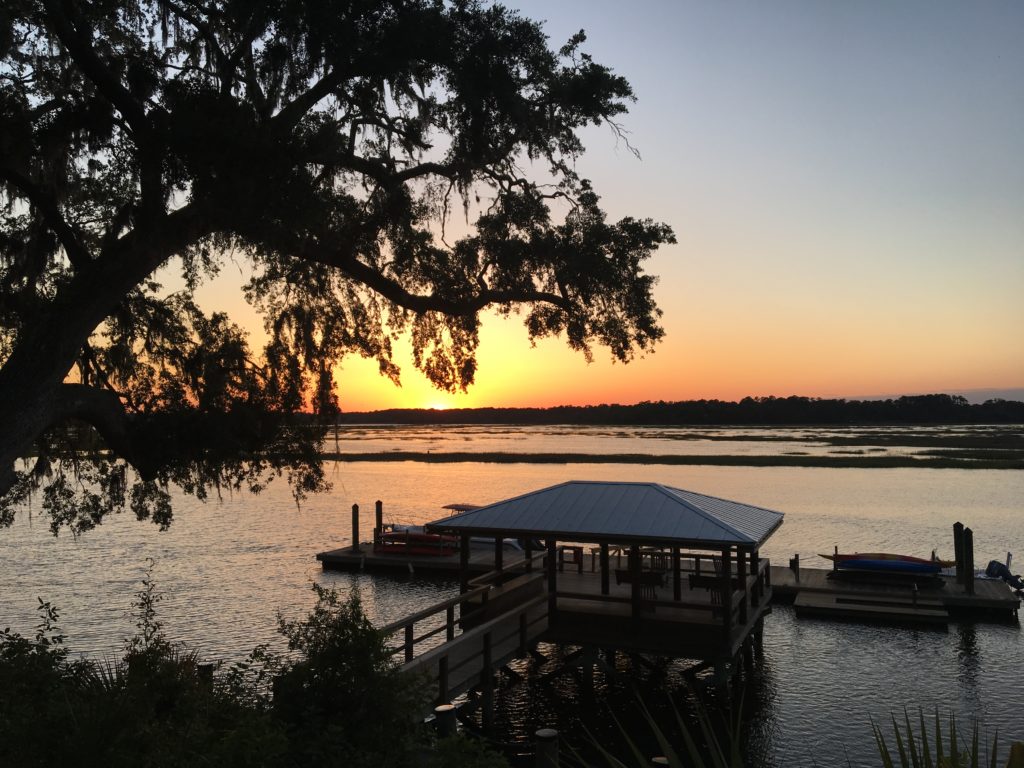
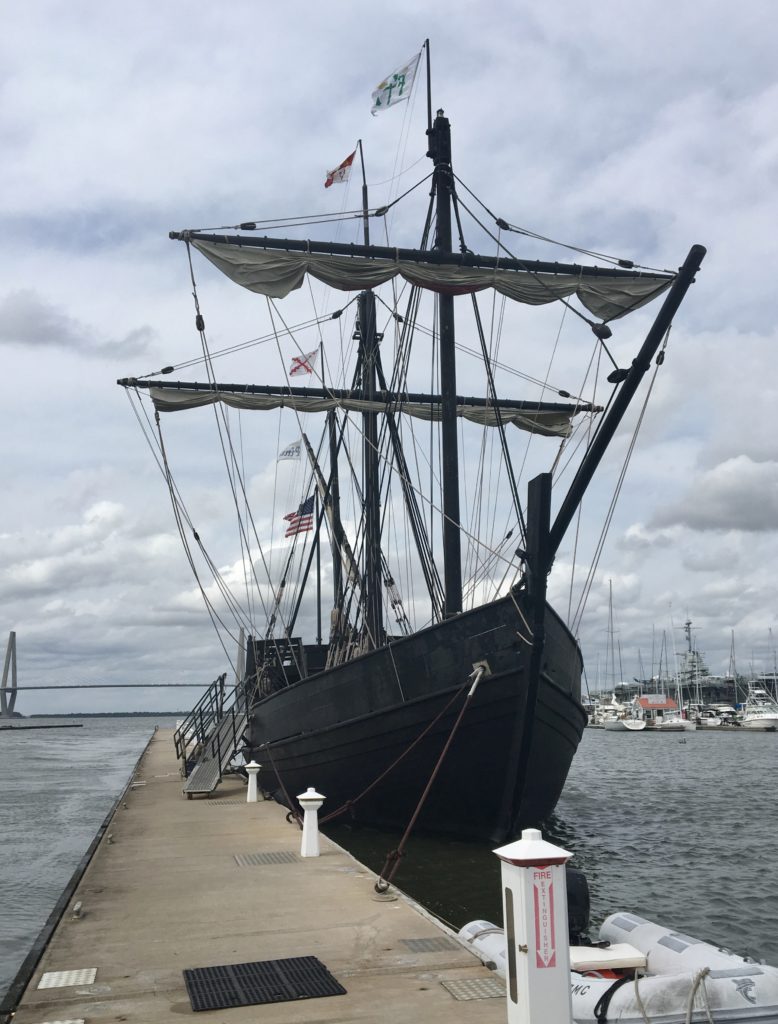
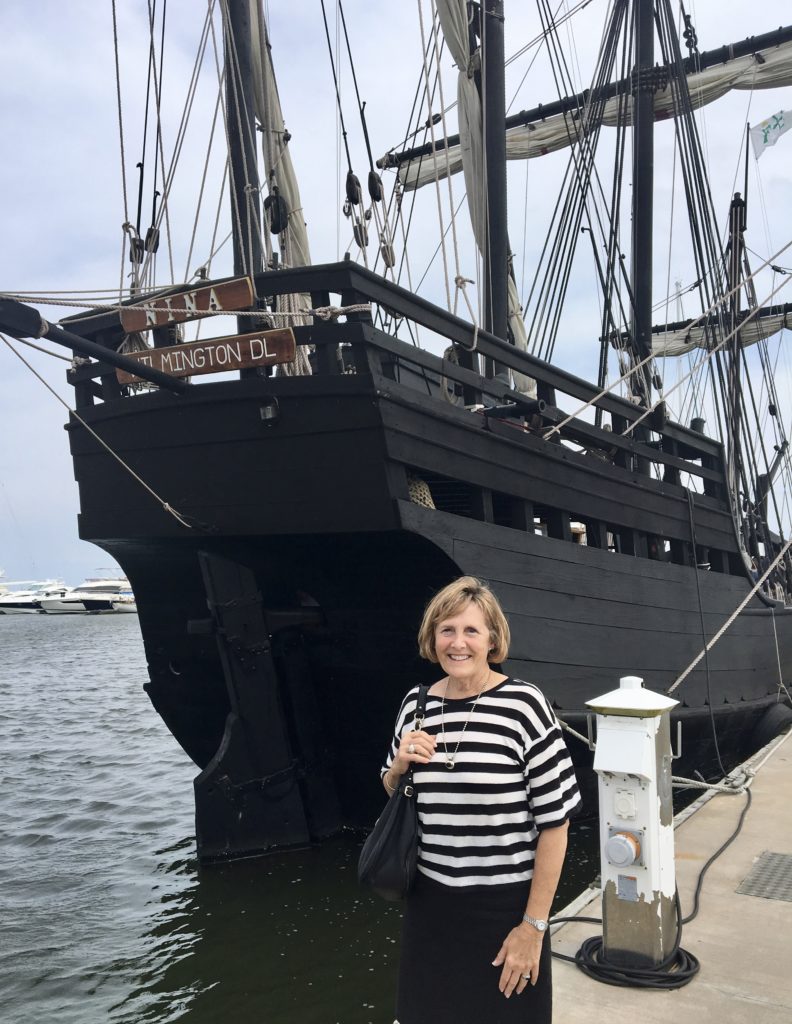
Leave a Reply to Sean Eidson Cancel reply